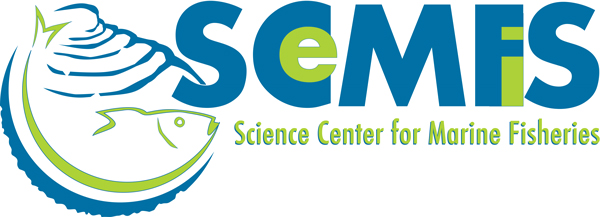December 4, 2020 — The following was released by the Science Center for Marine Fisheries:
Researchers working to determine the abundance of shellfish, including surfclams and ocean quahogs, have faced limits in getting a precise count due to the uncertainty inherent in stock assessment surveys. A new study, by Leanne Poussard, Dr. Eric Powell, and Dr. Daniel Hennen and published this month in Fisheries Research, examines one of these sources of uncertainty.
Uncertainty is a major factor affecting all stock assessments, which rely on estimating the size of an entire population based on the data provided by a small sample. Identifying these sources of uncertainty is key to producing precise estimates. In the case of surfclams and other shellfish species, a main driver of uncertainty is how efficient the dredges used during the stock surveys are in catching shellfish.
The National Marine Fisheries Service (NMFS) conducts what are known as depletion experiments to measure how efficiently a dredge harvests clams; a dredge will be run multiple times in a single area, and how quickly the catch declines with each subsequent tow will be used to estimate its efficiency. NMFS has also developed a statistical model to estimate the level of uncertainty present in these experiments.
Using this model, as well as running simulations of dredge tows, the new study finds that uncertainty in depletion experiments can be significantly reduced by taking measures such as running additional tows, and having more overlapping tows during the course of an experiment to measure gear efficiency. Having these measures in place could significantly reduce the role of survey gear as a source of uncertainty.
“By making modest changes to the way we conduct surfclam depletion experiments, we can potentially reduce uncertainty and be more confident in the ultimate results of clam stock assessments,” said Leanne Poussard, the lead author of the study. “This study provides clear guidance on the best ways to conduct future shellfish depletion experiments.”
“As a participant in NMFS surfclam and ocean quahog stock assessments over the past 30 years, I can attest that uncertainty regarding dredge efficiency has been a continuing source of scientific caution in projecting stock biomass, and appropriate levels of commercial harvest,” said Tom Alspach, of Sea Watch International. “This new work should significantly ameliorate that uncertainty, allowing fishery managers to appraise stock sustainability with more confidence, leading in turn to stability in annual quotas for the direct benefit of the harvesting sector. This is why the surfclam/ocean quahog industry has enthusiastically provided financial support for the research initiatives of SCEMFIS.”
The study is the latest to be funded by the Science Center for Marine Fisheries (SCEMFIS), and is part of the Center’s work of improving shellfish science and management. SCEMFIS is part of the National Science Foundation’s Industry-University Cooperative Research Center program. Working together with its partners in the fishing industry, SCEMFIS identifies the most pressing needs in finfish and shellfish science. In the last year, SCEMFIS funded over $191,000 in scientific research.

